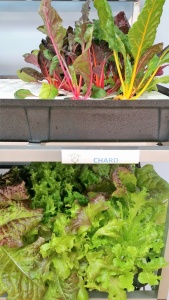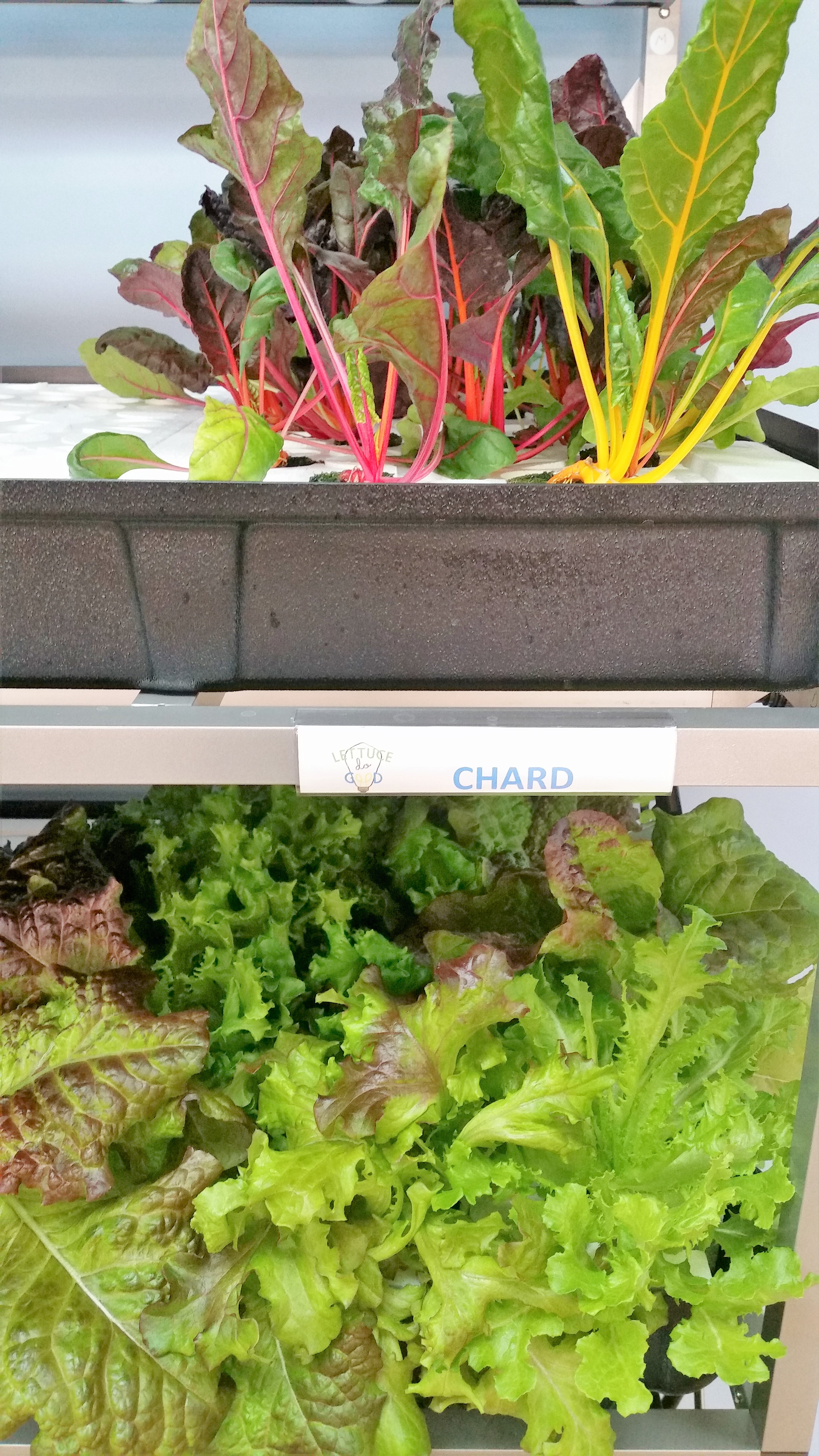By Jennifer Rodriguez
For those who live in a food desert like Youngstown, finding locally-sourced, fresh and organic food can seem impossible.
Two former Youngstown State University students are alleviating that problem with their indoor gardening company that teaches people how to grow fruits and vegetables all year. 
Katie and Tom Phibbs created Lettuce Do Good in 2016 with the intention of selling hydroponic gardens that could be used at home, in the office or in a classroom. These gardens use LED lights and water to substitute for sun and soil.
Hydroponic gardening is a method that is used in climates that aren’t sustainable for crops. The system ensures that crops can still receive essential nutrients and provide food throughout the year.
The couple started out working with the Lettuce People, an indoor garden in Youngstown where they grew greens for local restaurants, farmer’s markets and grocery stores.
The demand for produce was high, so they decided to start selling the gardens instead of vegetables and fruits, and they added a science, technology, engineering and mathematical teaching element.
That was the birth of Lettuce Do Good, and now the goal is to encourage schools to purchase these hydroponic gardens and teach children how to use them, Katie Phibbs said.
“We want schools to be able to grow their own food,” she said. “A lot of times schools will have a garden during the summer when kids are not actually in school, so they’ll get to start seeds but won’t actually get to harvest what they grow.”
Lettuce Do Good has been able to provide gardens to Brookfield Elementary, Campbell Elementary and schools in Liberty, Hubbard, Austintown and Chaney.
According to healthguidance.org, there are several advantages to indoor gardening. Indoor gardening doesn’t require as much space as outdoor gardening and is easy for beginner gardeners to use.
Phibbs said indoor gardening is important because it gives people peace of mind, knowing where their food came from. They can watch the process of the food being grown.
“This is a way for kids to understand that we can grow our own food, but also to teach sustainability,” said Phibbs. “Hydroponic gardens use 98 percent less water, 70 percent less fertilizer and 90 percent less space than if you were to grow outside.”
Weather can also be a factor when growing food outdoors, Katie Phibbs said. In Ohio, you may get four harvests a year growing outside, while with indoor gardening, Lettuce Do Good is able to get 21 harvests a year.
Anything can be grown hydroponically, but Lettuce Do Good sticks to growing leafy greens. There are currently 130 different varieties of lettuce.
Hydroponic gardens are also being used on YSU’s campus. The Youngstown Environment Sustainability Society and the Student Government Association have been renovating the greenhouse in Ward Beecher and use some hydroponic gardening techniques.
“It’s for academic purposes but [YESS] also wants to promote centralized growing for campus. It saves on costs and energy, and is sustainable for the environment,” said Gabriella Gessler, president of SGA.
Anyone who is interested in purchasing an indoor garden or a DIY classroom kit can go to http://ldggardens.com/ for more information.
